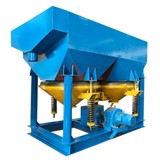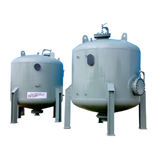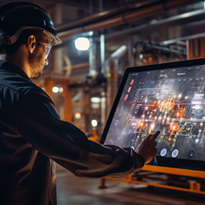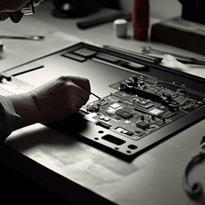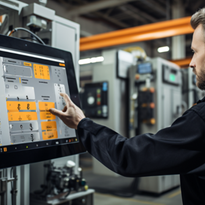In industrial settings, touch screen monitors have become indispensable tools, revolutionizing the way operators interact with machinery and control systems. The selection of the right touch screen monitor is crucial to ensure optimal performance, durability, and seamless integration within the industrial environment. With an array of technologies, sizes, resolutions, and customization options available, making the right choice can be challenging.
In this comprehensive guide, we will explore the key factors to consider when selecting a touch screen monitor for industrial use. From understanding different touch screen technologies to evaluating ruggedness, compatibility, and customization options, we will delve into each aspect exhaustively, providing valuable insights to assist industrial professionals in making informed decisions.
But First, Why here is why its important you choose the right touch screen monitor
Importance of Choosing the Right Touch Screen Monitor
Choosing the right touch screen monitor is of paramount importance in industrial settings due to its direct impact on productivity, efficiency, and overall user experience.
A well-suited touch screen monitor enhances the effectiveness of human-machine interaction, streamlines control processes, and ensures seamless integration within existing industrial systems. Here's why making the right choice matters:
- Enhanced Productivity: A properly selected touch screen monitor allows operators and industrial professionals to interact with machinery and control systems more efficiently. Intuitive touch interfaces enable quick access to data, controls, and settings, reducing the time spent navigating complex menus and commands. This heightened productivity translates into faster response times, increased throughput, and optimized industrial processes.
- Streamlined Control and Monitoring: Touch screen monitors provide a visual and interactive interface for controlling and monitoring industrial processes. The right touch screen monitor with the appropriate size, resolution, and touch sensitivity ensures that operators can interact with critical data and make informed decisions swiftly. This streamlined control facilitates precise adjustments, minimizes errors, and enables real-time monitoring for better quality control.
- Intuitive User Experience: Intuitive touch interfaces simplify the complexity of industrial tasks, making them more accessible to operators with varying levels of technical expertise. Familiar gestures and controls create a user-friendly experience, reducing the learning curve and increasing operator confidence. An intuitive touch screen monitor also lowers the risk of errors caused by misinterpretation or confusion.
- Reliable Operation in Challenging Environments: Industrial settings can be harsh and demanding, subjecting equipment to various challenges like dust, moisture, vibrations, and temperature fluctuations. Choosing a rugged and durable touch screen monitor ensures reliable operation in such conditions, minimizing downtime and ensuring continuous productivity.
- Improved Safety and Accuracy: The right touch screen monitor provides accurate touch sensitivity, critical for precise control in safety-critical applications. Accurate touch response reduces the risk of human error, which is especially crucial in industrial processes where safety is paramount.
- Customization for Specific Applications: Different industrial applications have unique requirements, ranging from specialized gestures to specific communication protocols. Choosing a touch screen monitor that allows for customization ensures that the monitor can be tailored to meet the specific needs of the application, optimizing its functionality and performance.
- Future-Proofing Investments: Industrial systems often have long lifecycles. Choosing a touch screen monitor that aligns with current and future technological advancements ensures that the investment remains relevant and functional for years to come. Future-proofing mitigates the need for frequent replacements and upgrades, optimizing cost-effectiveness.
Selecting the right touch screen monitor in industrial settings is not just a matter of preference; it directly impacts productivity, efficiency, and user satisfaction. A well-chosen touch screen monitor enhances productivity, streamlines control processes, and ensures reliable operation in challenging environments. An intuitive user experience, improved safety, and customization options tailored to specific applications further underscore the importance of making the right choice.
1. Understanding the Different Types of Touch Screen Technologies (Resistive, Capacitive, etc.)
When it comes to touch screen technologies, there are several options available, each with its unique strengths and applications.
Understanding the differences between these technologies is essential for choosing the most suitable touch screen monitor for industrial use. Here are the key points to consider:
Resistive Touch Screen Technology
- Comprised of multiple layers with a flexible top layer and a rigid bottom layer.
- Requires physical pressure to register touch, making it ideal for gloved hands or harsh industrial environments.
- Suitable for applications that do not require high levels of touch accuracy and clarity.
Capacitive Touch Screen Technology
- Utilizes the electrical charge of the human body to register touch.
- Provides excellent touch sensitivity and accuracy, making it ideal for precise industrial tasks.
- Generally more durable and resistant to wear and tear compared to resistive touch screens.
- Less suitable for gloved operation, but can work with specialized capacitive gloves.
Surface Acoustic Wave (SAW) Touch Screen Technology
- Utilizes ultrasonic waves that pass over the touch screen surface.
- Offers excellent clarity and durability, making it suitable for demanding industrial environments.
- Provides high touch sensitivity and supports multi-touch capabilities.
- Prone to damage from physical impact, limiting its use in rugged settings.
Infrared (IR) Touch Screen Technology
- Utilizes infrared light beams to detect touch.
- Supports large screen sizes and is resistant to scratches and dust.
- Offers good touch sensitivity, but can be affected by environmental factors such as ambient light.
Projected Capacitive Touch Screen Technology (PCAP)
- Advanced form of capacitive touch technology found in modern smartphones and tablets.
- Supports multi-touch gestures and provides exceptional touch accuracy.
- Durable and resistant to scratches, making it suitable for heavy industrial use.
- Less affected by environmental factors, such as water or dust.
2. Selecting the Optimal Touch Screen Size for Industrial Applications
The touch screen size matters significantly in industrial settings due to its direct impact on usability, efficiency, and overall user experience.
The right touch screen size ensures that the display is optimized for the specific tasks and applications performed within the industrial environment.
Here's why touch screen size matters:
- Usability and Interactivity: A properly sized touch screen allows for comfortable and effortless interaction. A screen that is too small may result in cramped buttons and controls, leading to misinputs and reduced efficiency. On the other hand, an excessively large screen may require excessive reaching or stretching, causing operator fatigue.
- Data Visualization: Industrial processes often involve the display of complex data, graphs, and visuals. Choosing an appropriate touch screen size ensures that information is presented clearly and legibly, facilitating easy data interpretation and decision-making.
- Ergonomics and User Comfort: The touch screen size should align with the ergonomic layout of the industrial workspace. Considerations such as viewing distance and user interface accessibility are crucial for minimizing operator strain and discomfort.
- Multitasking and Multi-Monitor Setups: In some industrial applications, operators may need to multitask or use multiple touch screen monitors simultaneously. Optimal touch screen size allows for seamless multitasking without compromising on usability and clarity.
- Integration and Space Constraints: The touch screen size should be compatible with existing mounting options and available space in the industrial environment. Ensuring a proper fit within the workspace allows for seamless integration and efficient use of available resources.
The touch screen size is a critical factor in industrial settings as it directly influences usability, data visualization, user comfort, multitasking capabilities, and integration within the workspace. Choosing the right touch screen size ensures that operators can interact with the display efficiently and effectively, enhancing productivity and user satisfaction in the industrial environment.
Here are the key points to consider:
- Application Requirements: Determine the specific tasks and applications the touch screen monitor will be used for. Consider the amount of information and data that needs to be displayed on the screen.
- Ergonomics and User Interface: The touch screen size should be suitable for the ergonomic layout of the industrial workspace. Consider factors such as viewing distance and user interaction.
- Physical Constraints: Evaluate the available space and mounting options in the industrial environment to ensure the touch screen monitor fits seamlessly into the existing setup.
- Readability and Clarity: Larger touch screen sizes generally offer better readability and clarity, especially when displaying complex graphics or detailed data.
- Multi-Monitor Configurations: For applications that require multiple monitors, consider the feasibility and practicality of integrating multiple touch screen monitors into the workspace.
- Cost Considerations: Larger touch screen monitors may come with higher costs. Balance the budget constraints with the functional requirements of the industrial application.
3. High-Resolution Displays: Enhancing Clarity and Precision:
Industrial applications often demand high levels of clarity and precision in data visualization and control. High-resolution touch screen displays are essential for achieving these objectives. Here are the key points to consider:
- Resolution and Pixel Density: Higher resolution displays offer greater pixel density, resulting in sharper images and text. Consider the specific resolution requirements based on the industrial tasks at hand.
- Visual Inspection and Data Analysis: Industrial applications involving detailed visual inspection, data analysis, and CAD/CAM software benefit significantly from high-resolution displays.
- Graphical User Interfaces (GUI): Complex industrial processes often rely on GUIs for control and monitoring. High-resolution displays enhance the user experience and ease of interaction.
- Future-Proofing: Opting for high-resolution displays ensures the touch screen monitor remains compatible with future advancements in industrial software and graphical interfaces.
- Touch Accuracy: Higher resolution displays allow for more precise touch accuracy, which is vital for operating intricate industrial controls.
4. Touch Sensitivity and Accuracy: Critical Factors for Industrial Environments:
Touch sensitivity and accuracy are critical factors for industrial environments due to the demanding nature of tasks and the need for precise control and monitoring. In industrial settings, touch screen monitors serve as the primary interface between operators and complex machinery or control systems. The ability to interact accurately and reliably with the touch screen is essential for several reasons:
- Precise Control of Industrial Processes: Industrial applications often involve controlling machinery, robots, or intricate processes. Touch sensitivity and accuracy allow operators to make precise adjustments and inputs, ensuring that the machinery operates at optimal levels.
- Real-Time Monitoring and Data Entry: Industrial environments require real-time monitoring of various parameters and data inputs. Accurate touch responses enable swift data entry and adjustments, minimizing delays and ensuring timely responses to changing conditions.
- Safety-Critical Applications: In safety-critical applications, such as in manufacturing or hazardous environments, touch sensitivity and accuracy become even more crucial. The ability to trigger emergency shutdowns or control safety protocols accurately can prevent accidents and protect personnel and equipment.
- Minimizing Human Error: A touch screen with high sensitivity and accuracy reduces the risk of human error during data input and control operations. Accurate touch responses prevent unintended inputs or misinterpretation, ensuring reliable and consistent outcomes.
- Gloved Operation: In certain industrial settings, such as in manufacturing or outdoor environments, operators may need to wear protective gloves. Touch screens with high sensitivity can accommodate gloved operation, ensuring seamless control and monitoring without the need to remove gloves.
- Multi-Touch Capabilities: Some industrial applications benefit from multi-touch capabilities, allowing operators to perform complex gestures like pinch-to-zoom or rotation. Accurate touch sensitivity enables reliable multi-touch gestures, enhancing the user experience and efficiency.
- Calibration Stability: Proper calibration is crucial for maintaining touch accuracy. Touch screens with stable and reliable calibration features ensure that touch responses remain accurate over time, minimizing the need for frequent recalibration.
- Reduced Downtime: Accurate touch sensitivity reduces the likelihood of touch-related malfunctions or calibration drifts, leading to reduced downtime for calibration or touch screen replacements.
- High-Pressure Environments: In industrial environments with high-pressure conditions, such as those found in certain manufacturing processes, touch screens with high sensitivity can register touch inputs accurately even under pressure.
Here are the key points to consider:
- Touch Sensitivity Levels: Different touch screen technologies offer varying levels of touch sensitivity. Evaluate the required sensitivity based on the tasks performed in the industrial environment.
- Glove and Stylus Support: In certain industrial applications, the use of gloves or styluses is common. Ensure the touch screen monitor is compatible with these input methods.
- Touch Response Time: Rapid touch response time is crucial for real-time industrial control processes to ensure seamless operation.
- Multi-Touch Support: For applications that require multi-touch gestures, such as pinch-to-zoom or rotation, opt for touch screen monitors that support multi-touch capabilities.
- Calibration and Calibration Stability: Regular calibration is essential for maintaining touch accuracy. Choose touch screen monitors with stable and reliable calibration features.
5. Ruggedness and Durability: Ensuring Reliability in Challenging Conditions
Industrial environments can be harsh and demanding, subjecting touch screen monitors to various challenges. Ruggedness and durability are essential factors to consider to ensure long-term reliability.
Here are the key points to evaluate:
- Ingress Protection (IP) Rating: The IP rating indicates the touch screen monitor's level of protection against dust and moisture. Higher IP ratings are ideal for industrial settings with exposure to harsh environments.
- Vibration and Shock Resistance: Industrial machinery and equipment may generate vibrations and shocks. Choose touch screen monitors with adequate resistance to withstand these impacts.
- Chemical and Scratch Resistance: Industrial processes may involve exposure to chemicals or abrasive materials. Opt for touch screen monitors with chemical and scratch-resistant surfaces.
- Temperature Range: Consider the temperature range in the industrial environment. Choose touchscreen monitors with operating temperatures that align with the application requirements.
- Enclosure Material: Sturdy and durable enclosure materials, such as stainless steel or aluminum, enhance the touch screen monitor's ruggedness.
- Sunlight Readability: For outdoor or brightly lit industrial environments, opt for touch screen monitors with sunlight-readable displays to ensure optimal visibility.
6. Seamless Integration: Compatibility with Existing Industrial Systems
Industrial touch screen monitors must seamlessly integrate with existing systems and control interfaces to maximize their efficiency and functionality. Here are the key points to consider:
- Operating System Compatibility: Ensure that the touch screen monitor is compatible with the operating system used in the industrial environment, whether it's Windows, Linux, or a specialized OS.
- Interface Compatibility: Evaluate the available interfaces (USB, HDMI, RS232, etc.) on both the touch screen monitor and the industrial system to ensure seamless connectivity.
- Driver Support: Check for driver availability and compatibility with the target operating system to ensure smooth integration.
- Mounting Options: Consider the mounting options available for the touch screen monitor to ensure it can be securely installed within the industrial environment.
- Communication Protocols: For touch screen monitors used in control systems, verify that the monitor supports the required communication protocols for seamless data exchange.
7. Customization Options: Tailoring Touch Screen Monitors to Specific Requirements:
Each industrial application is unique, requiring touch screen monitors with specific features and functionalities. Customization options allow tailoring the monitor to meet these individual requirements.
Here are the key points to consider:
- Front Panel Customization: Customizable front panels allow for branding, color matching, and integration of specific buttons or indicators.
- Screen Size and Aspect Ratio: Depending on the application, custom screen sizes or aspect ratios may be required to meet specific display requirements.
- Embedded PC and Processing Power: Some industrial applications may benefit from touch screen monitors with embedded PCs or higher processing power for on-board data processing.
- Unique Touch Gestures: Certain industrial tasks may demand custom touch gestures beyond the standard pinch-to-zoom and rotation.
- Temperature and Environmental Adjustments: In extreme environments, custom adjustments may be necessary to optimize touch screen performance.
- Additional Connectivity Options: For specific industrial systems, additional connectivity options, such as GPIO or industrial Ethernet, may be required.
Choosing the right touch screen monitor for industrial use is a critical decision that directly impacts productivity, efficiency, and user experience. By understanding the different touch screen technologies, selecting the optimal size and resolution, evaluating touch sensitivity and accuracy, ensuring ruggedness and durability, assessing compatibility and customization options, industrial professionals can make informed choices. Investing in the right touch screen monitor tailored to the specific industrial application ensures seamless control, enhances productivity, and facilitates reliable and efficient operations in the dynamic world of industrial environments.




-160x160-state_article-rel-cat.png)






-160x160-state_article-rel-cat.png)


